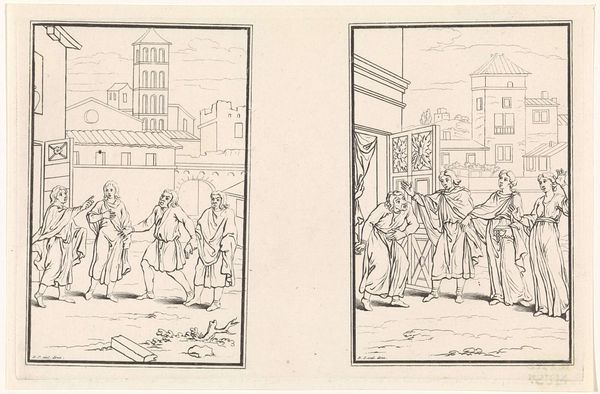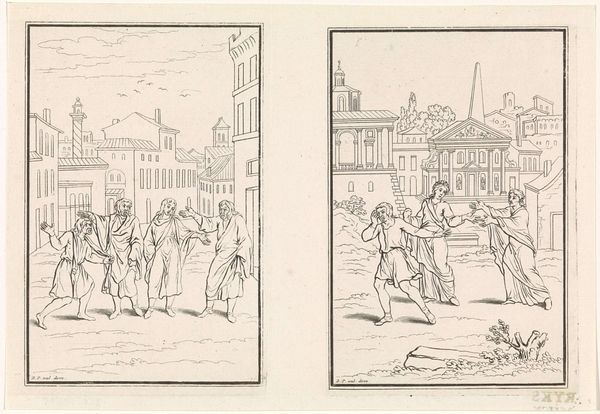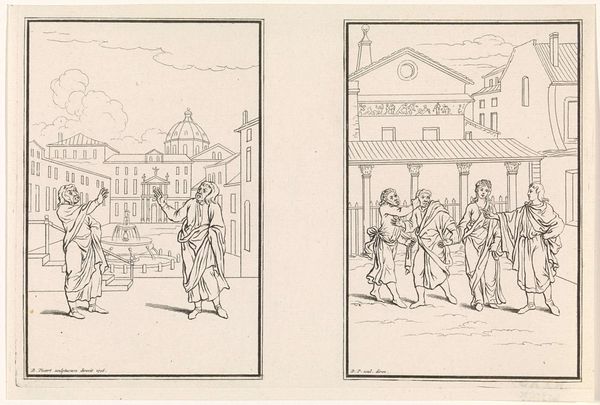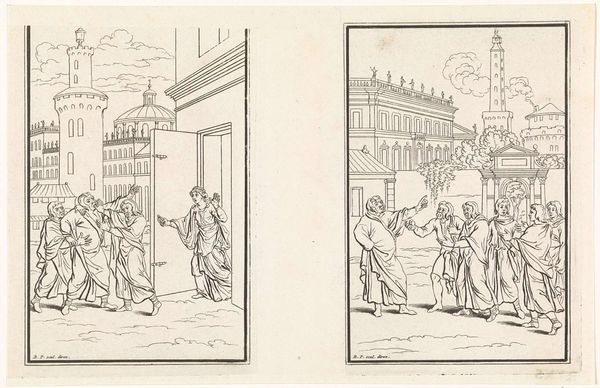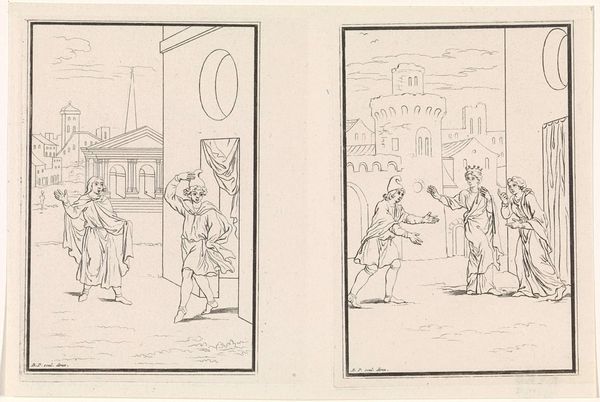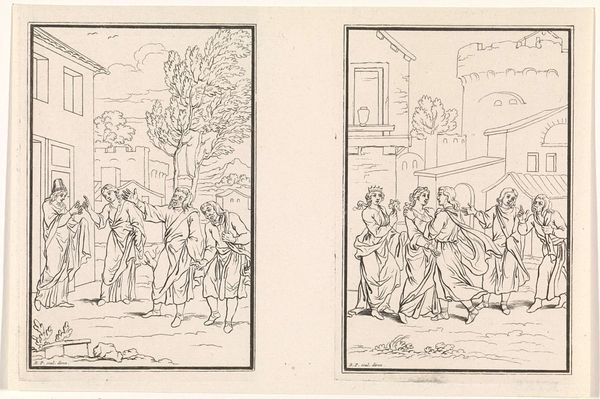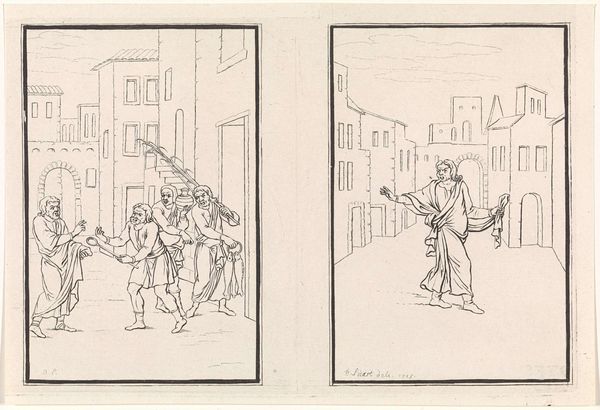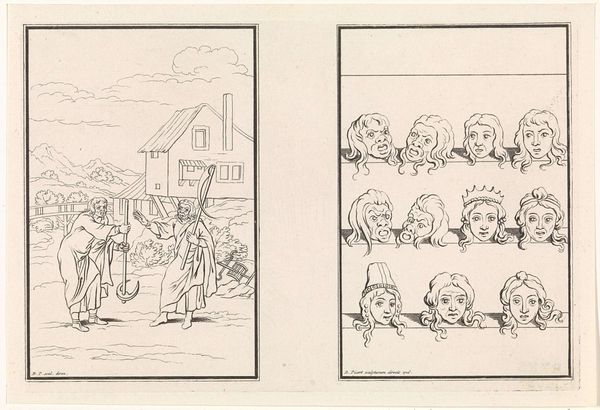
drawing, ink, pen
#
drawing
#
baroque
#
pen illustration
#
figuration
#
ink
#
pen work
#
pen
#
history-painting
Dimensions: height 132 mm, width 198 mm
Copyright: Rijks Museum: Open Domain
Curator: This delicate drawing is called "Twee scènes uit de komedie Andria van Terentius" by Bernard Picart, dating from 1716 to 1718. It’s ink on paper. Editor: The piece feels very theatrical, naturally. A sense of stagecraft and exaggerated gesture prevails. I’m sensing a mix of gravitas and wry humor. Curator: Yes, these are scenes rendered from Terentius's play Andria, reflecting the complexities of relationships, misunderstandings, and social customs within Roman society. I want to emphasize Picart’s deployment of the ink medium: notice the meticulous, fine pen work used to build architectural depth and define the drapery on each figure. The social world is very much a manufactured thing here. Editor: Manufactured, yet alive. The spareness, the almost architectural line-work itself, lends it such dramatic intensity. It's less about the individual actors and more about the geometry of their encounters, if that makes sense. You feel the drama unfolding in the space between the characters; in how the penstrokes define that distance. Curator: Quite, and that speaks to Picart's approach. As an engraver, he was primarily a reproducer of existing work, yet in translating theatrical drama, he could exercise a sophisticated artistic commentary on social production via engraving. Editor: You've certainly pulled back the curtain there! It almost feels like Picart is not simply illustrating, but directing, using the starkness of ink to stage manage the nuances of Terentius' comedy, stripping away unnecessary ornamentation. Curator: And for a culture where theater had become enmeshed with power and courtly politics, this reduction itself functions as commentary. The means of production, of image-making, reflect this back at social conventions. Editor: I find that idea of stage-managing very appealing— the art is not simply in what we see, but in the unseen forces bringing these dramas, or any human encounter, to life. That, to me, is the true material of Picart’s art. Curator: Precisely. Thinking about its execution allows us a deeper look into how image and narrative shaped social life during that period.
Comments
No comments
Be the first to comment and join the conversation on the ultimate creative platform.
